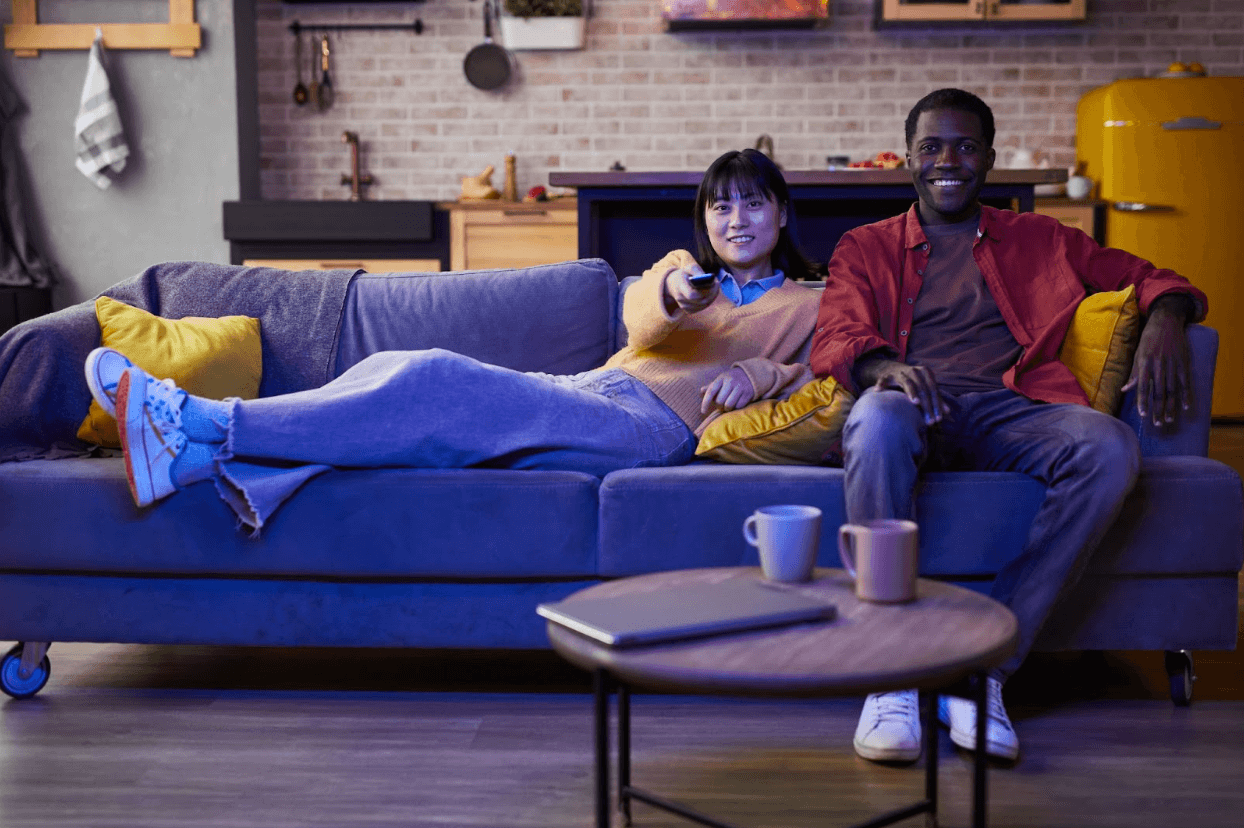Enhancing TV Accessibility for Hearing Loss: Top Devices & Tips in 2025
Discover easy and effective ways to improve your TV's sound quality from adjusting settings to using external devices. Click here to find out how

Hearing loss makes it hard to follow conversations and difficult to hear important sounds such as alarms, sirens, or approaching vehicles.
Hearing loss also makes it harder to hear TV better, an activity many enjoy. This can be especially frustrating because turning up the volume isn't always the best solution, which can often make the audio harder to grasp, especially if the sound mixes dialogue, music and sound effects.
At the same time, increasing the volume to hear TV better can be counter-productive and cause even more harm to your hearing and others around you. Long or repeated exposure to loud noises above 85 dB can damage your hearing and cause hearing loss.
With this in mind, it's essential to find alternatives. The good news is that you don’t have to give up on enjoying watching your favorite TV shows, sports, or news channels, thanks to leading hearing devices for television. With a few different options, your choice depends on the severity of your hearing loss and personal preference.
Why Can’t You Hear the TV?
Loud to one person is not loud enough to another.
Certainly, there is a point where the volume is so loud that the result is distortion. However, a good volume setting overshadows devices and environments with other competing sounds, such as a fan running or street traffic sounds.
But this is just a matter of personal preference. Sometimes, the answer is that you may be experiencing hearing loss.
Do others at home constantly complain and say: “Make it lower!” while you’re having trouble hearing?
Knowing that more than 1.5 billion people worldwide are currently affected by hearing loss in at least one ear, finding it challenging to hear the TV could be a sign of hearing loss.
If you’re struggling to hear the TV, here’s a list of devices that can help.
Best Devices to Enhance TV Experience with Hearing Loss in 2025

If you’re looking to hear TV better or for TV hearing devices for seniors, take a look at this list:
1.Soundbars
Soundbars are horizontal speakers that amplify audio coming from the TV, usually sold as separate devices. They are considered an upgrade that enhances your listening experience as well as TV hearing devices for seniors. The most advanced models can simulate the surround sound effect, which is felt in movie theaters but at an affordable price. Typically, soundbars prioritize sound clarity, improving the listening experience for everyone at home, especially those with hearing loss.
2.Closed Captions
Closed captions are a great way to improve your TV viewing experience without blasting the volume. The Federal Communications Commission (FCC) requires all digital televisions over 13 inches to provide closed captioning text, allowing viewers to read dialogue. Search for the “CC” icon on your remote control to toggle captions on and off.
3.Hearing Aids
Most hearing aids offer noise cancellation features that reduce background noise and amplify noise from in front of you, which can help you hear the TV better, especially dialogue.
A great tip is to activate Bluetooth if it is on your hearing aids so your device can tap into the sound system and stream directly into your hearing aids, making these TV hearing devices for seniors a great choice. This also works great when watching TV together with a group, so others can set the volume settings to their liking while you control yours.
4.Wireless Headphones
Another great solution to amplify the sound of a TV is wireless headphones. With many different brands, you can find comfortable and fashionable models that allow private listening to hear TV better. Search for features such as personal volume control, comfort, and simple setup. There are even dedicated TV headphones that plug into the TV and send a radio frequency or Bluetooth signal directly to the headset.
5.Smart TV Features
Changing specific presents in your TV settings may lead to hear TV better.
- The night mode audio setting compresses the difference between loud and soft sounds to make audio more accessible at low volumes.
- Switching to “Stereo” or “Normal” is another recommended option for surround-sound TVs.
- For multichannel sound systems like Dolby Digital or DTS, the volume of the center channel speaker should be increased to improve the understanding of dialogue.
6.Personal Amplifiers
Commonly known as PSAPs, a personal amplifier is an over-the-counter device worn in or behind the ear or as a headset or neckband with earbuds to help you hear the TV better. Some PSAPs may have a handheld control for volume, hearing modes, or other adjustments. If you’re looking for Tv hearing devices for seniors this is definitely worth the try.
Conclusion
We hope this guide helps you find the right solution for clear sound to enjoy your TV experience. It's recommended to get a hearing test if you're experiencing early signs of hearing loss, such as difficulty hearing the TV.
When it comes to a great TV experience with hearing loss, one of the best solutions is hearing aids. Hearing aids amplify the sounds from your TV without being distracted by background noise.














